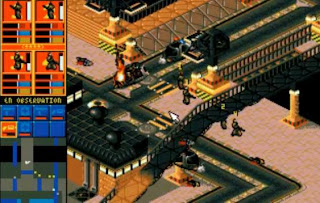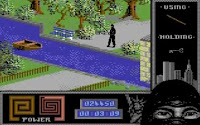
(Arcade/Various Home, Konami, 1992)
^Check out that girl on the left. BLAM!
Harry Callahan didn't give a shit. A tired, world-weary homicide detective, Dirty Harry, fantastically portrayed by Clint Eastwood, was an awesome anti-hero. Harry dealt with crime his way and had little to no time for paperwork, bureaucracy or his superiors. Just a tall dude in a geography teacher suit packing a Magnum. That's all the rehab San Francisco scum needed.
Konami's Lethal Enforcers arcade was more than a little influenced by Harry's antics (the title screen is lifted directly from the opening of Magnum Force for a start)
Set in Chicago, one or two players take the role of two law officers who are about to be called to a series of incredibly busy crime scenes. Seriously, Jack Bauer would cry if he had to deal with this situation.
Lethal Enforcers is an on-rails shooter that I am officially proclaiming the re-birth of the lightgun game. With digitised graphics, high violence, a selection of weaponry and the "Reload" feature (shooting off-screen) Lethal Enforcers brought the Operation Wolf rail shooter screaming into the 90's.
The players gun through five crime scenes and a shooting gallery, filling anyone who pops up wearing sunglasses with more lead than a pencil factory. The game is backed with wailing guitars and awesomely funny voice samples "You can't kill me, copper!" Yes. Yes I can. As usual, various innocents feel the need to leap into the line of fire and the players must avoid gunning them down with a big blood splat. Other than that, it's anything goes, rapid fire and background destruction is the order of the day. Like Midway's NARC before it, Lethal Enforcers has a wonderfully republican attitude toward crime.
Say no, or die.
Lethal Enforcers is best played today as arcade emulation or the rare Playstation version. The home versions of the day suffered from grainy graphics and in the SNES incarnation, laughable levels of censorship (Going so far as to change "Drug-Dealers" to "Gunrunners" and "Chinatown" to "Downtown" I swear I'm not making this up) Of course, compared to today's double-screen Time Crisis 4 and fifty-inch HDTV House Of The Dead 4, Lethal Enforcers looks rigid and dated, with the digitised sprites and photograph backgrounds looking antique. Don't let that fool you, Lethal Enforcers was an important videogame and Konami kept lightguns alive and blazing when many had long since abandoned the genre.
-"I don't want any trouble like you had last year. Understand? That's my policy."
-"Yeah, well, when an adult-male is chasing a female with intent to commit rape, I shoot the bastard, that's my policy"


































